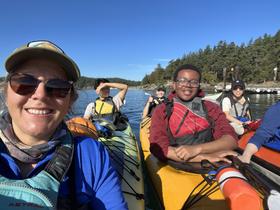I applied to teach at a private school in The Bahamas some years ago. During my interview, the head of school noted that I had a degree in Latin and Greek from McGill University. She exclaimed that she had always wanted her students to learn Latin. I looked at her, somewhat puzzled, and asked why she wanted Latin as part of her school's curriculum; she opined that it would help their SAT scores. I remember being skeptical about this claim, but I was more concerned about what the parents would think about having their children study a dead language. So, the head of the school called a meeting of the parents to discuss her proposed addition of Latin to the curriculum. Many parents expressed their concerns, but the head of the school was compelling in her arguments. As a result, I began teaching Latin to students in Grades 5 through 9.
Selecting a Curriculum
My next challenge, of course, was to select a Latin curriculum. Several courses were available, but I chose the Cambridge Latin Course. It enjoyed a good reputation. It was also very well laid out and organized. I made these choices in the 90s, so we were looking at the first or second edition of that particular curriculum. That was back when there was no such thing as a digital edition. Nowadays, the Cambridge Latin Course has a digital edition and a host of resources available on their website.
















